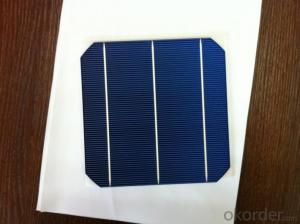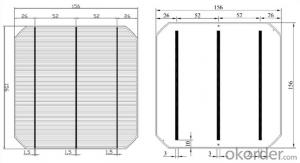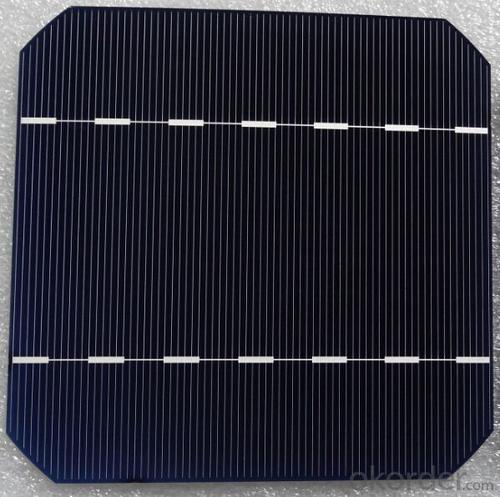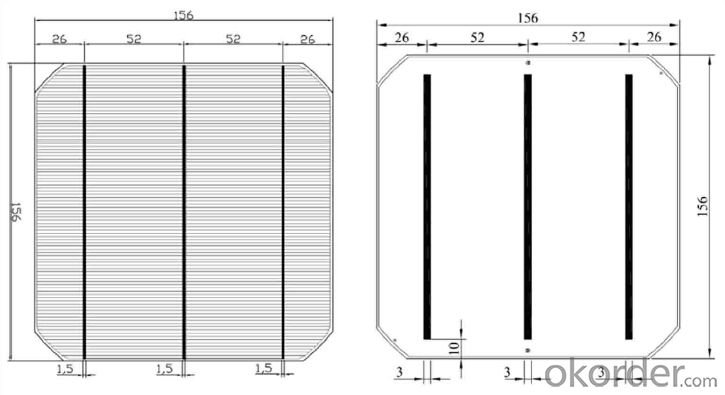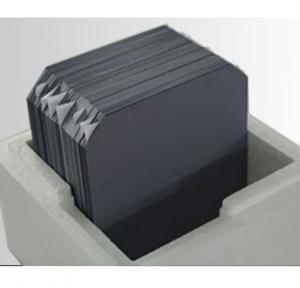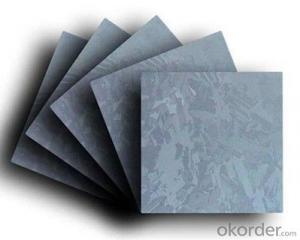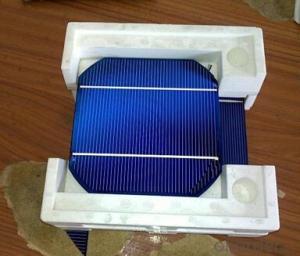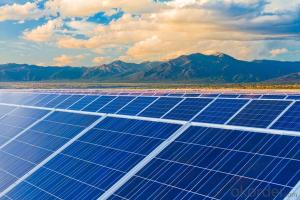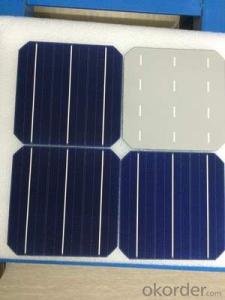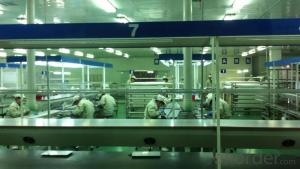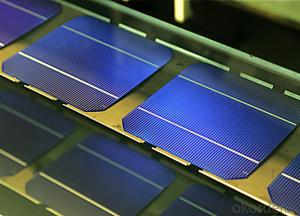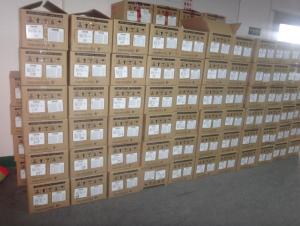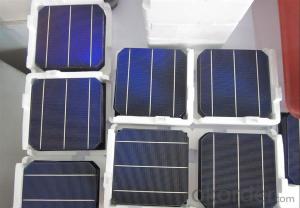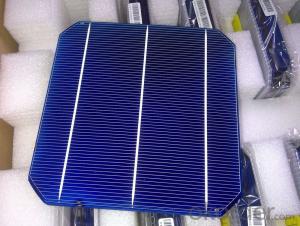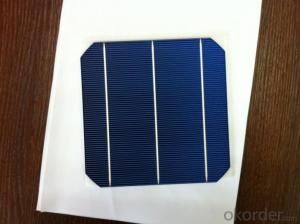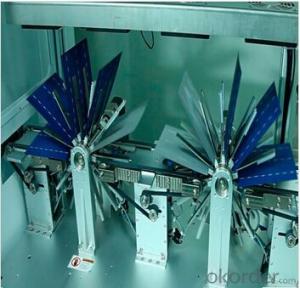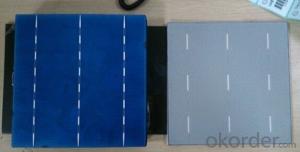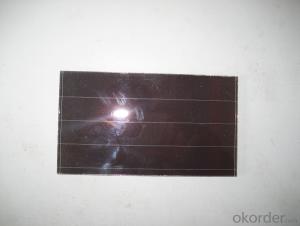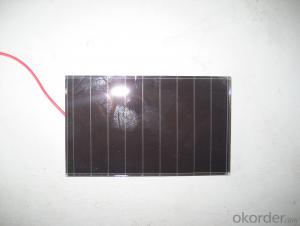A Silicon Wafer Solar Cell - Mono Solar Cells 156mm*156mm in Bulk Quantity Low Price Stock
- Loading Port:
- Shanghai
- Payment Terms:
- TT OR LC
- Min Order Qty:
- 10000 pc
- Supply Capability:
- 100000 pc/month
OKorder Service Pledge
OKorder Financial Service
You Might Also Like
Specification
Brief Introduction
- Up to 20.0% efficiency, one of the highest performing mono crystalline cells on the market
- Three bus bars boosts current collection over the entire cell area, leading to higher fill factors
- Blue anti-reflecting coating allows more sunlight be captured and converted to electricity
- Finer, closer fingers improves charge collections for improved energy yield
- Lower light-induced degradation leads to greater power output over the entire module lifetime
- All solar cells are tightly classified to optimize output of module
- Maximum yield and longevity due to hotspot prevention
- Premium appearance results in a highly uniform and aesthetically appealing module
Specification
- Product Mono-crystalline silicon solar cell
- Dimension 156 mm x 156 mm ± 0.5 mm
- Thickness 200 μm ± 30 μm
- Front 1.5 ± 0.1 mm busbar (silver)
- Silicon nitride antireflection coating
- Back 3.0 mm continuous soldering pads (silver)
- Back surface field (aluminum)
Electric performance parameters

- Testing conditions: 1000 W/m2, AM 1.5, 25 °C, Tolerance: Efficiency ± 0.2% abs., Pmpp ±1.5% rel.
- Imin : at 0.5 V
Light Intensity Dependence
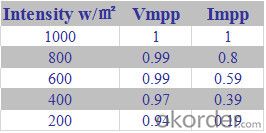
Soldering Ability
- Peel Strength: > 1.0 N/mm (Pull soldered ribbon from busbar in 5 mm/s of 180°)
Dimension Figure

Quick Response
- Any time and anywhere, reply clients' email and solve all problems happen in the work at the first time.
- Remove clients doubts and offer the best solution at the first time.
- Give our clients the lastest news of the photovoltaic, update the newest stock informtion.
Production and Quality Control
- Precision cell efficiency sorting procedures
- Stringent criteria for color uniformity and appearance
- Reverse current and shunt resistance screening
- ISO9001,ISO14001 and OHSAS 18001,TUV Certificated


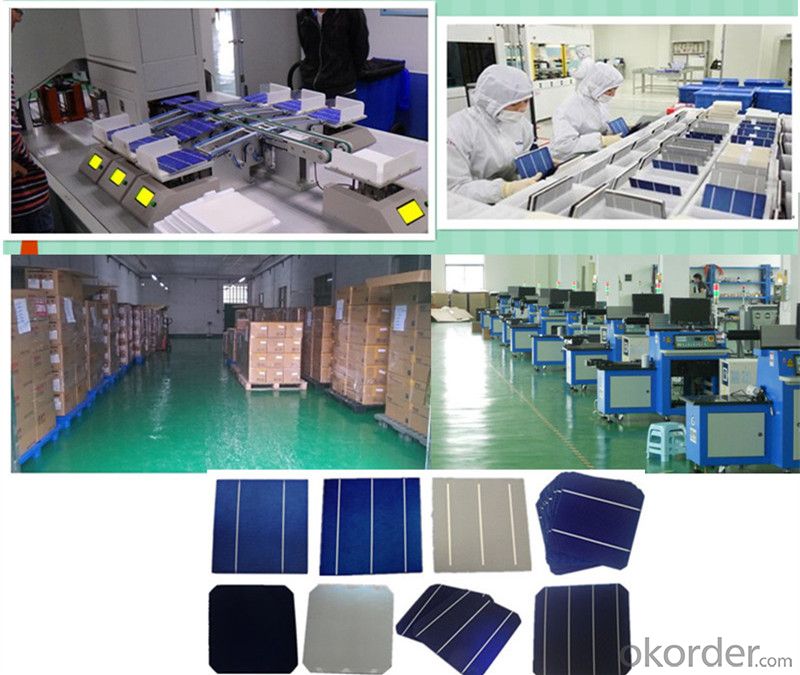
FAQ:
1. Q: Do you have your own factory?
A: Yes, we have. Our factory located in Jiangsu
2. Q: How can I visit your factory?
A: Before you visit,please contact us.We will show you the route or arrange a car to pick you up.
3. Q: Do you provide free sample?
A: Commenly we provide paid sample.
4. Q: Could you print our company LOGO on the nameplate and package?
A: Yes, we accept it.And need an Authorization Letter from you.
5. Q: Do you accept custom design on size?
A: Yes, if the size is reasonable.
6. Q: How can I be your agent in my country?
A: Please leave feedback. It's better for us to talk about details by email.
7. Q: Do you have solar project engineer who can guide me to install system?
A: Yes, we have a professional engineer team. They can teach you how to install a solar system.
- Q: How are solar silicon wafers connected in a series or parallel configuration?
- Solar silicon wafers are typically connected in a series configuration to increase the overall voltage output of a solar panel. In this arrangement, the positive terminal of one wafer is connected to the negative terminal of the next, forming a chain-like connection. On the other hand, parallel configuration involves connecting the positive terminals of all wafers together and the negative terminals together, resulting in higher current output. Both series and parallel connections are commonly used in solar panel manufacturing to optimize the power output based on specific requirements.
- Q: What is the expected lifespan of a solar silicon wafer in a solar panel?
- The expected lifespan of a solar silicon wafer in a solar panel can vary, but on average it can last for about 25 to 30 years.
- Q: How are solar silicon wafers protected from external factors like moisture or dust?
- Solar silicon wafers are typically protected from external factors like moisture or dust through the use of various protective coatings and encapsulation materials. These coatings act as a barrier, preventing any moisture or dust particles from coming into direct contact with the silicon wafer. Additionally, the wafers are often enclosed within a hermetically sealed module, providing further protection against external elements. This combination of coatings and encapsulation helps to ensure the long-term durability and performance of solar silicon wafers in various environmental conditions.
- Q: What is the role of surface texturing on solar silicon wafers?
- The role of surface texturing on solar silicon wafers is to enhance light trapping and absorption, thereby increasing the efficiency of the solar cells. The textured surface helps to reduce the amount of light reflection and scattering, allowing more photons to be absorbed by the silicon material and converted into electricity.
- Q: How does the efficiency of a solar silicon wafer change with latitude?
- The efficiency of a solar silicon wafer is not directly affected by latitude. The efficiency of a solar panel is primarily determined by factors such as the angle and orientation of the panel, the intensity and duration of sunlight, and the temperature. While latitude can indirectly influence these factors, it is not the sole determinant of solar panel efficiency.
- Q: Why should the wafer cut side, cut out edge Jiaosha
- In fact, early silicon is not cutting edge, but with the development of microelectronics industry began the following reasons: cutting edge, W2) i: J n$W% L* M1 s `&;1, n can do a plurality of microelectronic devices on the wafer, cut down, and there is a crystal to crystal growth requirements, cutting along a direction for cutting chaos crack, cleavage is the professional said. The cutting edge tells you the direction of cleavage.2, N type and P type silicon wafer, a standard trimming is also inform you that it is n type or P type electrical characteristics, electrical characteristics, u$J2 z/ h 9 - O3, microelectronics production has been automated, such as lithography exposure if there is no cutting edge positioning, then the mask plate and the chip will be a difference of 180 degrees or a certain location, production efficiency will be very low...,4, the use of a lot of silicon, in addition to n/p also have crystal direction, for example, do MEMS requires corrosion anisotropy will be used <110> crystal direction, and MOS products in order to reduce the influence of the surface state requirements with <100> crystal...
- Q: What is the typical energy payback time for a solar silicon wafer?
- The typical energy payback time for a solar silicon wafer is around 1 to 4 years, depending on various factors such as the type and efficiency of the solar panel, location, and manufacturing processes.
- Q: What are the main manufacturers of solar silicon wafers?
- Some of the main manufacturers of solar silicon wafers include companies like REC Silicon, Wacker Chemie, Hemlock Semiconductor Corporation, and Shin-Etsu Chemical Co., Ltd.
- Q: How are solar silicon wafers protected from extreme temperatures?
- Solar silicon wafers are protected from extreme temperatures by encapsulating them in various layers of protective materials such as glass or polymer. These protective layers act as a barrier, shielding the wafers from direct exposure to high temperatures and preventing any damage or degradation. Additionally, solar panels are designed with proper thermal management systems, including heat sinks and ventilation, to dissipate excess heat and maintain optimal operating temperatures for the silicon wafers.
- Q: What is the typical lifetime energy yield of a solar silicon wafer?
- The typical lifetime energy yield of a solar silicon wafer can vary depending on various factors such as the efficiency of the solar cells, climate conditions, and maintenance. However, on average, a silicon wafer can produce energy for around 25 to 30 years.
Send your message to us
A Silicon Wafer Solar Cell - Mono Solar Cells 156mm*156mm in Bulk Quantity Low Price Stock
- Loading Port:
- Shanghai
- Payment Terms:
- TT OR LC
- Min Order Qty:
- 10000 pc
- Supply Capability:
- 100000 pc/month
OKorder Service Pledge
OKorder Financial Service
Similar products
Hot products
Hot Searches
Related keywords

